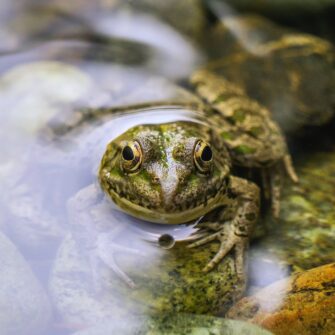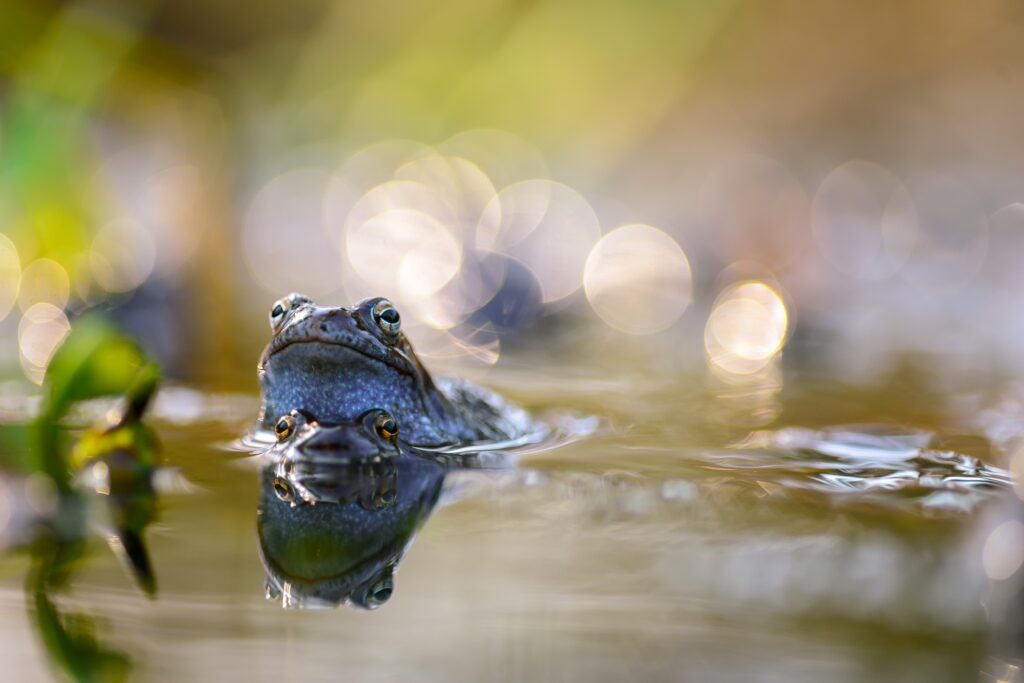
Be a Frog Scout
From the National Wildlife Federation
Spring is the time for frogs.

What frogs live near you??
Let’s Get Started
Throughout spring, frogs are on the lookout for wet places to find mates and lay eggs. Each kind of frog has its own kind of call. So even if you do not see the frog, you can identify them by the sounds they make.
Here are a few tips for scouting for frogs where you live:
- Be prepared to get wet—and maybe even a little muddy!
- Listen for frogs calling their mates. In spring, male frogs call for females to be their mates. If you’re anywhere near a pond, marsh, or other wet areas, you can’t miss their loud chorus.
- See if you can sneak up on a frog before it plops into the water. Hearing frogs is easy, but, if you want to see frogs, you have to be quiet.
- Stay still, if a frog jumps into the water with a splash. They’ll probably pop back up in a few minutes. Then you can get a good look.
Document Your Discoveries
Grab your Nature Notebook and start a frog study. Pretty soon, you’ll be an expert frog scout.
BONUS: Frogs are most active at night. So grab a light and an adult to listen and look for frogs.
Scientists say there isn’t a clear distinction between frogs and toads. Did you know toads are a classification of frogs? So technically toads are a type of frog. Both are amphibians and they are similar in many ways, but they are also different in a few ways.
Here’s how they are different: Generally,
- Frogs live in wet areas or near water.
- Toads, on the other hand, get out on land a little more and find their way into gardens and yards.
- Toads have lumpy skin around their eardrums and legs due to glands that contain a foul-smelling poison to discourage predators from eating them.
- Frogs also usually have moist smooth skin, while toads have dry bumpier (warty) skin.
- Toads have shorter hind legs than frogs.
Remember To Stay Healthy!
Frogs and other amphibians can carry diseases. Click here to learn more about the different diseases and what you can do to keep yourself and frogs healthy!
To learn more about how to be a frog scout, click here!
Back to All